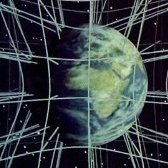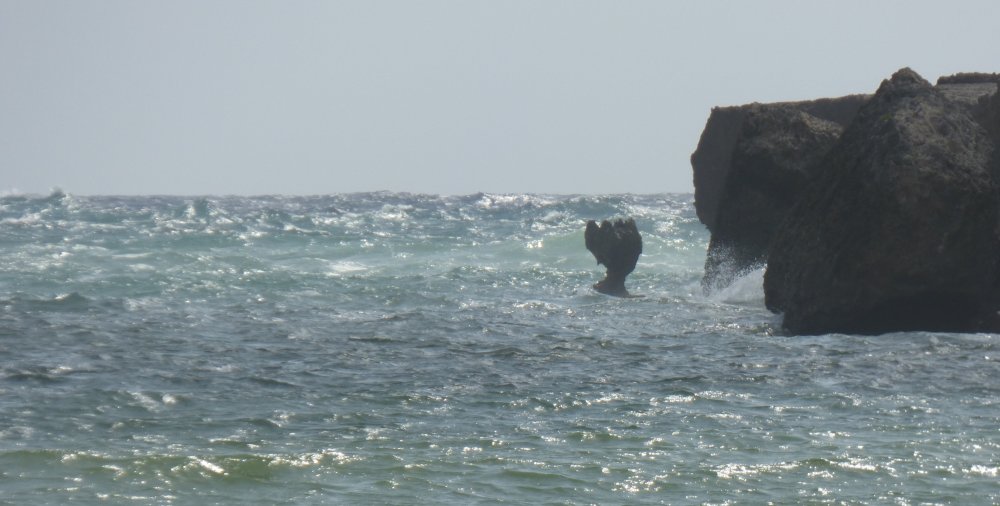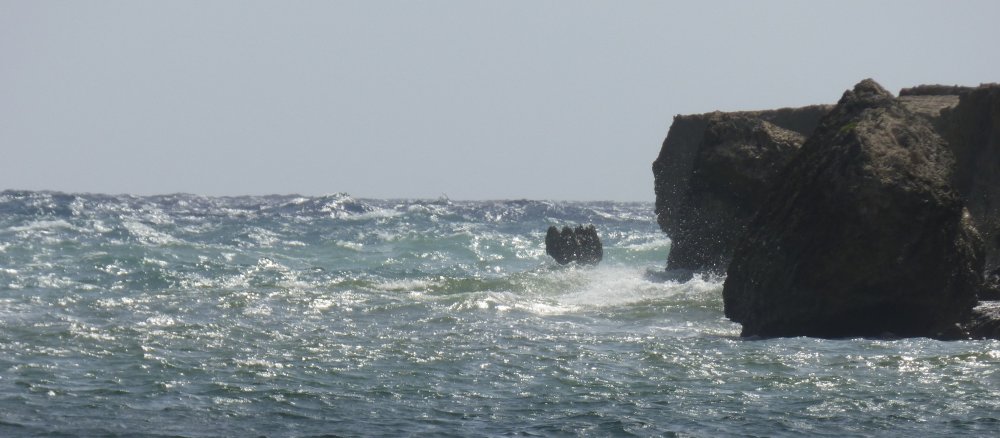Leaderboard
Popular Content
Showing content with the highest reputation on 10/18/24 in all areas
-
No, that is what is called the 'naturalistic fallacy', also known as 'one cannot derive an 'ought' from an 'is''. But your title is another question: "Does science provide a path to a meaningful life?". In a very basic sense, every person striving for something, whatever, leads a meaningful life. It could be even unethical. But leaving that aside, people derive their meaningful life from many things: successfully raising kids, getting rich or powerful, help other people, making beautiful woodworking (how do I get at this example? I wonder...), trying to improve on their moral stance, trying to understand the universe... Which is science. Personally I think science can lead in another way to meaningful life, not just because one finds it 'interesting' or for the usage of its results in technology. Understanding the universe and our place in it can be a spiritual experience. I even once heard something like that from a theology student: he found the essence of religion the realisation that we are just a dust corn in the universe. Of course I like the factual way, as science goes, much better than a theological 'understanding', based on fantasies or old mythologies. And last but not least (being very subjective now), I would plead for studying philosophy. Not freewheeling philosophy (that is fantasy not necessarily with gods or magic), but philosophy grounded as well in science as in our daily experience. The nice thing of philosophy is that it brings all together: it contains also the reflections on what facts, values, and a meaningful life are. So philosophy in this sense is the highest endeavor a human can do . So, I think this was my most subjective posting in this forum.2 points
-
I've been asked to help save a mauled cat (stable ATM - I've cleaned and debrided the wound with saline, cleared back some pelt, and applied vetericyn as a hydrogel over the gaping wounds - she's now sleeping and doesn't seem febrile). The veterinary option doesn't work for the cat's owner, and I have enough basic medic skills that I offered (reluctantly) to do what I can. Two big openings which suggest canine upper and lower jaws coming in and ripping out some hunks. Looks like the visceral peritoneum is intact, with skin and fascia torn away. Emough missing that it would need either a very tensioned purse string suture or some kind of graft (clearly beyond me). There's a whiff of infection, so I want to leave it open for now. What is hard to tell is if there's any suture pattern that will really close things up and not rip when she moves. The alternative is "healing by secondary intention," where wound stays open and collagen fibers start to grow over and form scar tissue. This will leave bald spots prominent1 point
-
I would also like to hear others' thoughts on whether or not science provides a path to living a meaningful life in the same vein as religion. I suppose that people can derive ethical values from scientific information, but others' thoughts on the matter is appreciated.1 point
-
1 point
-
That's sort of what I did. Informal consultation confirmed that leaving it open was their best option. They have to get one of those Elizabethan collars for a while, so she will leave the wounds alone and not lick off the hydrogel. Those, fortunately, are $10-15 at a pet supply store.1 point
-
like i read that we need to assume: gas molecules are spherical and they follow newtons laws of mechanics. molecules of gas has negligible volume as compared to whole volume of gas. attraction or repulsion doesnt occur between molecules of gases sir im a 17 year old student and was just being curious about a topic which still had to be taught in my school.1 point
-
What do you mean by this, exactly? Spacetime is not embedded in anything else, so when we are talking of geometry in this context, what we are referring to is intrinsic geometry on the manifold.1 point
-
OK, that's enough, I think this is all bullshit. For example, I quote the following sentence:" The DDS explores this instantly created real-time database to conclusively determine the correct composition using the principles of Vernier's coincidence, superimposition, concordance, and wave-interference patterns. The determination of the correct composition with an absolute degree of certainty and accuracy from the real-time database of numerous PICs is a significant achievement, unprecedented in the history of materials science. There is no such thing as "Vernier's coincidence, superposition, concordance and wave-interference pattern". This is sciency-sounding gobbledgook. Similarly, all this bullshit about "real time" has no relevance to the alleged subject of study, which is determination of the composition of an alloy, i.e. an entirely static problem. Real time in relation to what activity? Your blob of alloy just sits there indefinitely. You can analyse it as fast or as slowly as you like. I'm starting to suspect this is all just nonsense cobbled together by an AI program.1 point
-
Because almost all of the assumptions are only approximations of real world gas behaviour under similar atmospheric conditions to those we are all routinely familiar with at earth's surface. For simple, non-critical cases these approximations are often close enough for the differences to be unimportant. However, for more complicated, more critical situations, it is necessary to replace the less valid assumptions with empirically grounded correlations specific to the use-case. And to do this you need a thorough working understanding of what those assumptions are in the first place. O, yes and in passing - if you don't have that thorough working understanding, you don't even get to judge what counts as simple and non-critical.1 point
-
Do you mean the assumptions that the molecules engage in perfectly elastic collisions and that the volume they take up can be neglected? These are just the types of simplifying assumption that science theories often resort to, in order to build a simple, idealised model that is easy to work with. It is very often found that by working with simplified models one can get pretty close to predicting behaviour correctly. (Simplifying, in order to see the main thing that is going on, is a very useful way to approach many problems in life). What is also interesting is then to investigate the deviations of some real substances from the ideal behaviour predicted by the model. That can allow you to understand the particular extra effects that are responsible. In this example, the effect of the volume taken up by the molecules becomes important at high gas pressures (i.e. when the molecules don't have a lot of room to move around in). Similarly at very low absolute temperatures, the slight "stickiness" between molecules resulting from van de Waals attraction between them can be important. Both cause deviations from the simple kinetic theory model (and in fact van der Waals himself developed revised equations to account for each of these effects). So the basic model explains most of what is observed, while studying the deviations gives you a more complete level of understanding.1 point
-
I see a bit of problem with this. The density of an alloy will in generral not be a simple linear interpolation between the densities of the components. There will be a degree of interaction between the different elements present, according to their mutual chemical affinity or otherwise, and effects due to the packing of atoms of dissimilar size in the metal lattice. This is addressed for example in this piece of work: https://www.sciencedirect.com/science/article/pii/S0364591619302524. in which the enthalpy of mixing is used as a way to estimate these effects. I am also rather confused by the following sentence in your post: " In this pursuit, we have found evidences of chromosomal structure of probability distributions of the probable iso-density compositions, butterfly effect stemming from alloy density, principle of vernier caliper in multi-dimensions etc." What is meant by chromosomal structure of probability distributions? What is meant by a butterfly effect in this context? What is meant by principle of vernier caliper in multi-dimensions?1 point
-
1 point
-
Dear @Exchemist and @Studiot, Thank you very much for your kind interest in our work and for taking the time to discuss our research. We appreciate your insights and the opportunity to clarify any misunderstandings. To address the confusion regarding our methodology, we want to emphasize that the Density Decoding System (DDS) does not rely on exploring a preserved or stored large database to search for the composition corresponding to an input density. Instead, the DDS automatically creates its own real-time database of multiple series of Probable Iso-density Compositions (PICs) based on the nC2 combinatorial notation, where n represents the number of constituent metals in the alloy associated with the input density. The DDS explores this instantly created real-time database to conclusively determine the correct composition using the principles of Vernier's coincidence, superimposition, concordance, and wave-interference patterns. The determination of the correct composition with an absolute degree of certainty and accuracy from the real-time database of numerous PICs is a significant achievement, unprecedented in the history of materials science. It is crucial to note that the number of PICs in the real-time database increases exponentially in higher-order multicomponent alloys due to the gradual increase in the number of constituent metals and PIC series generated for input densities. For example, the densities of octonary alloys consist of 28 PIC series, and sometimes a single series can contain millions of PICs, leading to an NP-Hard situation in decoding the densities of higher-order alloys. Our work extends the classical Archimedes' density method, which was primarily used merely for qualitative analysis based on the density-composition relationship in binary alloys. We have quantified and extended this relationship further for ternary, quaternary, and higher-order alloys by developing the modified Archimedes' density equations. These equations relate the density of an alloy to the densities and mass fractions of its constituent elements, allowing us to establish a mathematical relationship between composition and density. The DDS effectively tackles the problem of underdetermined systems by first considering mass percentages (M=100), which constricts the alloy space (VAS) to the area in a ternary plot (3-metals), tetrahedral plot (4-metals), and so on. The system then discretizes the composition space and condenses the infinity by slicing it in various increasing accuracy levels, enabling the computation of PIC series based on nC2 combinatorial notation and the identification of the True Composition (TC) through the analysis of Concordant Compositions (CCs). Our research has not only demonstrated the successful identification of alloy compositions up to octonary systems using density alone but has also uncovered fascinating insights into the functioning of the algorithm. We have found evidence of chromosomal structure in the probability distributions of PICs, the manifestation of the butterfly effect stemming from alloy density, perfect order beyond the infinity and the principle of Vernier calliper in multi-dimensions. We hope this clarifies our methodology and addresses any misunderstandings about our work. We invite you to explore our research paper further, as we believe it presents a fascinating and novel approach to alloy characterization and design. Kindly feel free to reach out if you have any questions or require further clarification/information Thank you once again for your kind engagement and the opportunity to discuss our research. Best regards, Dr. B. C. Rathore and Research Team rathorebc@hotmail.com-1 points









